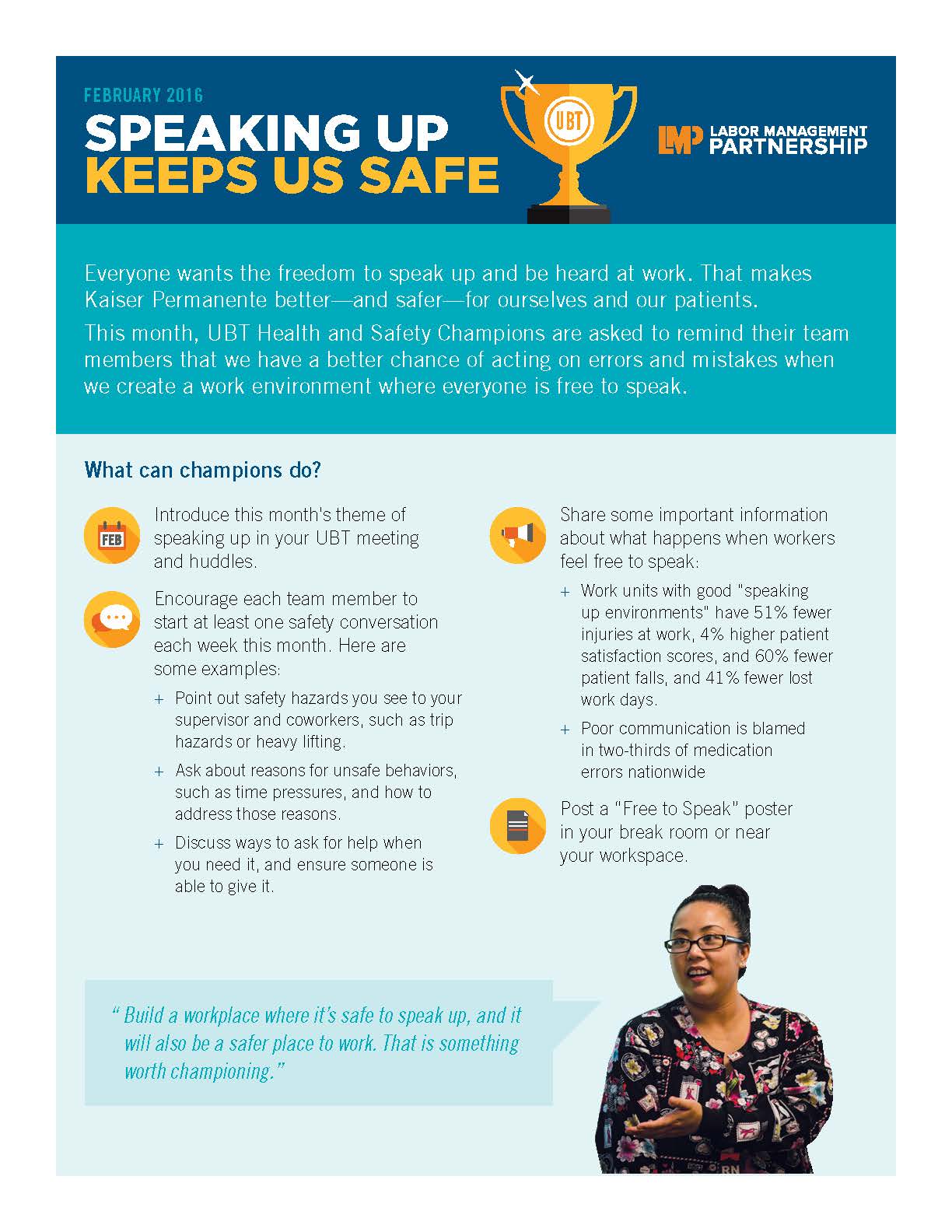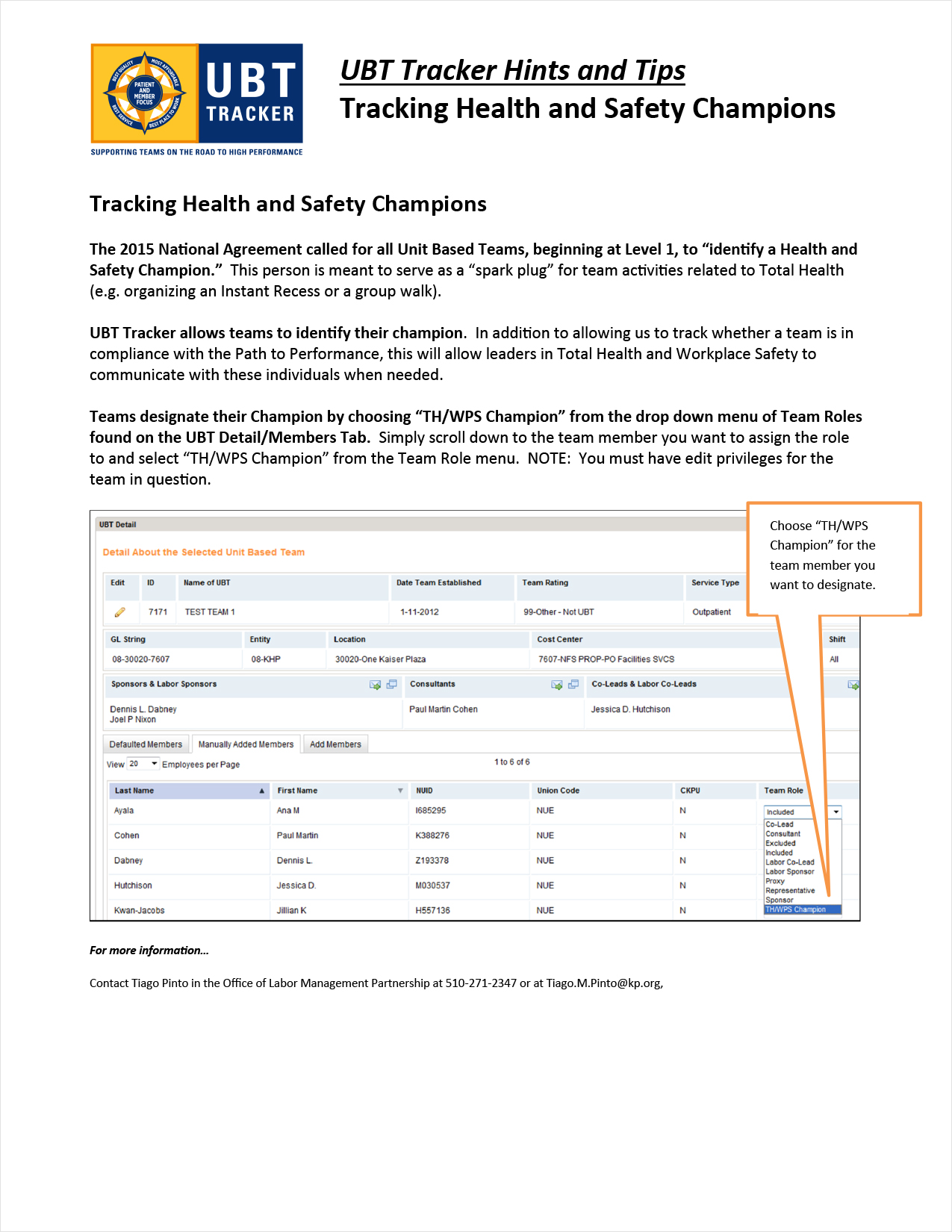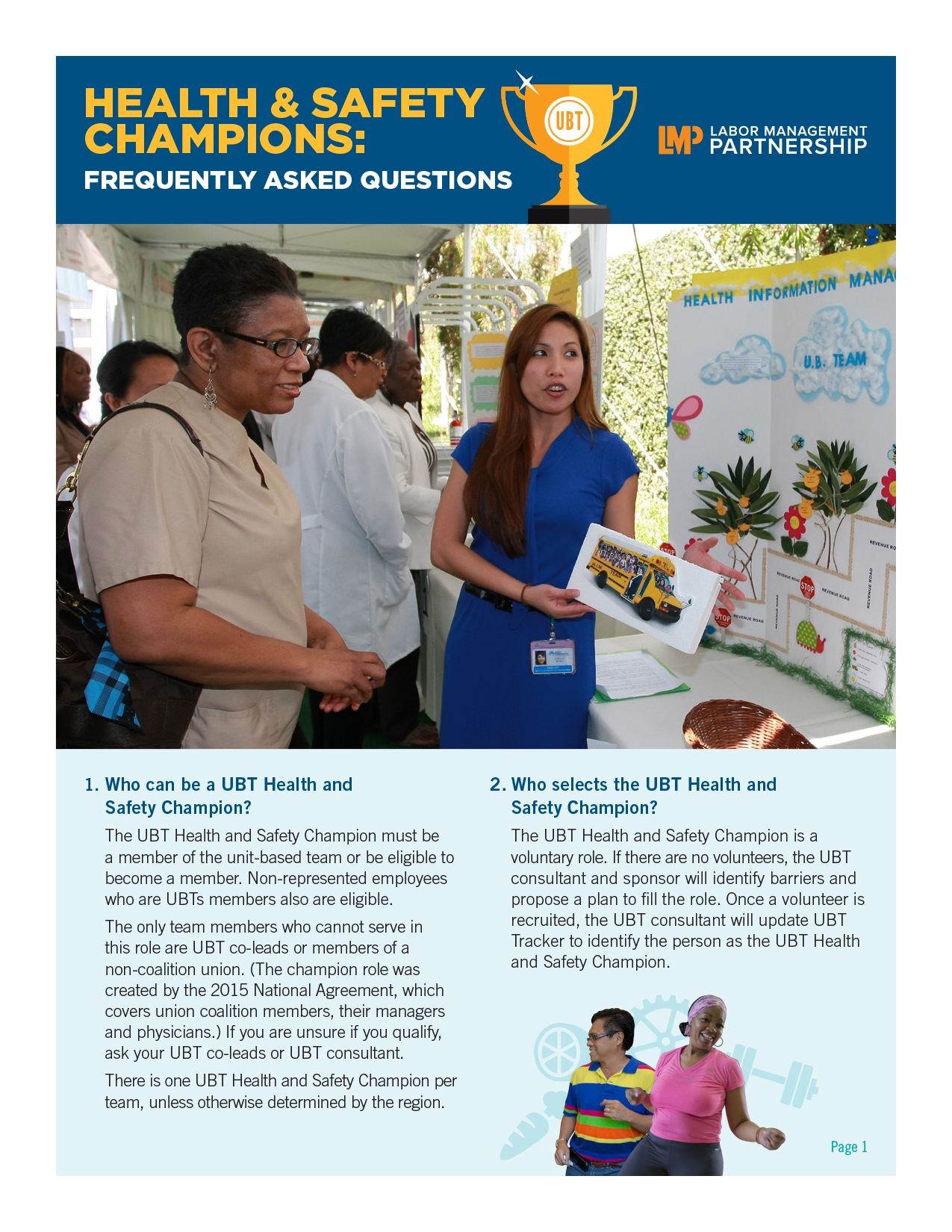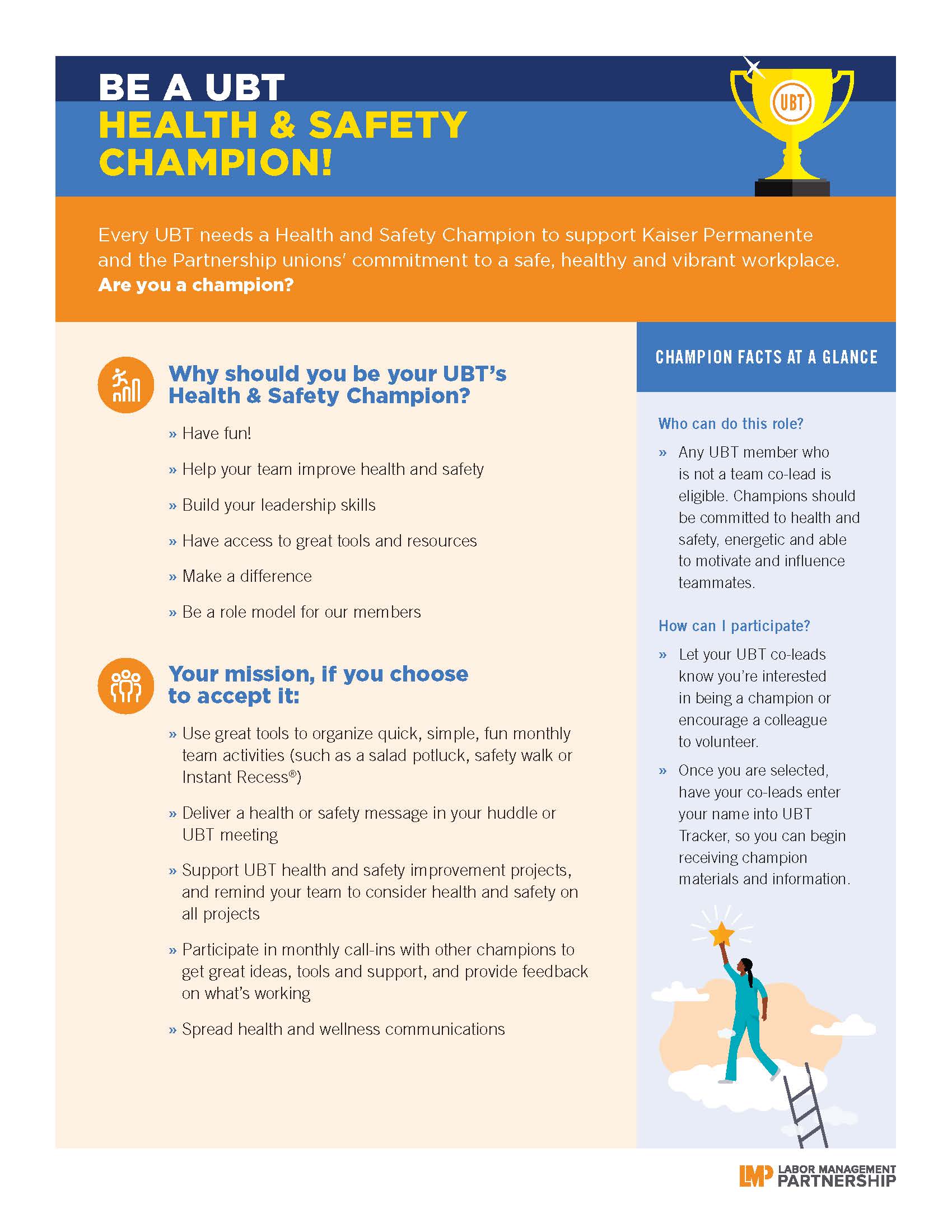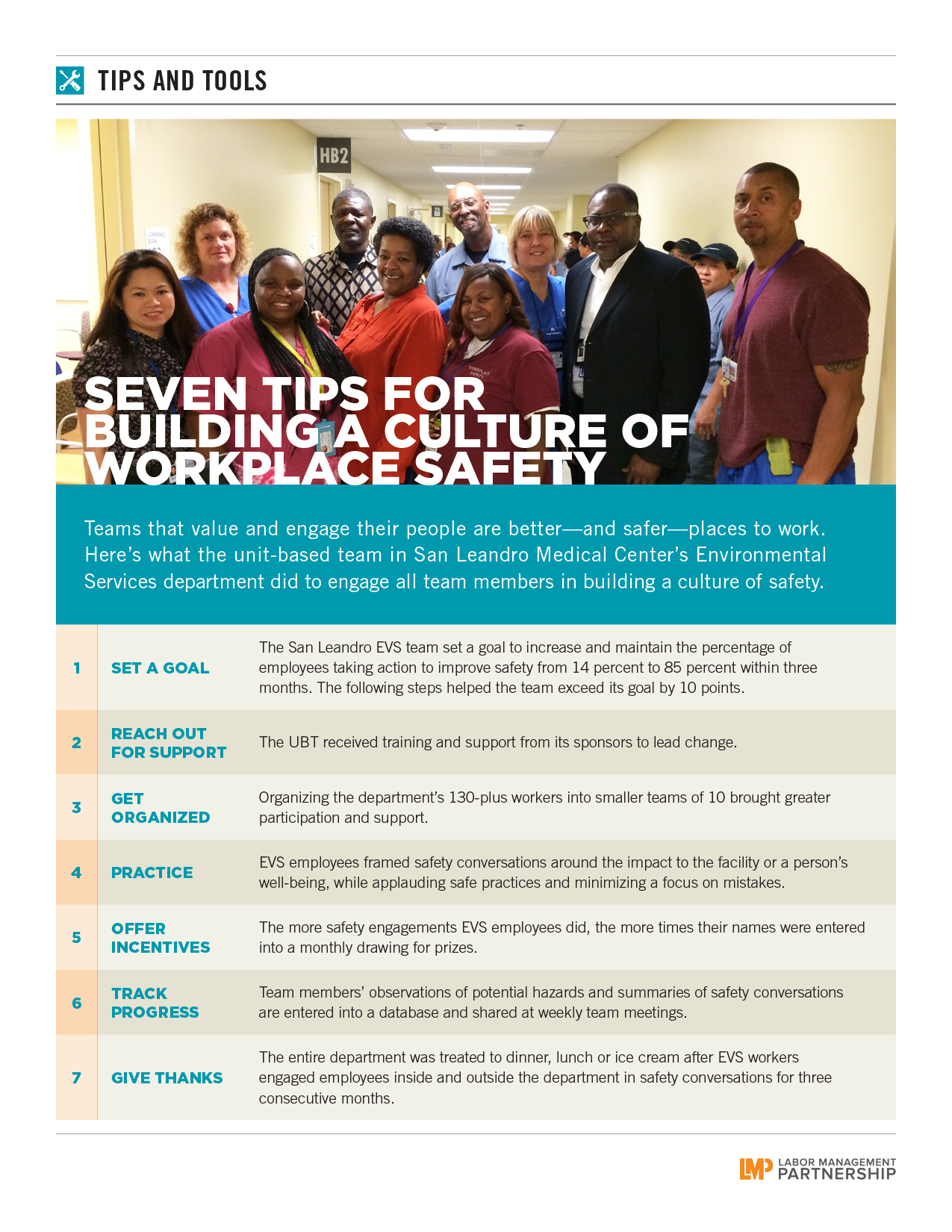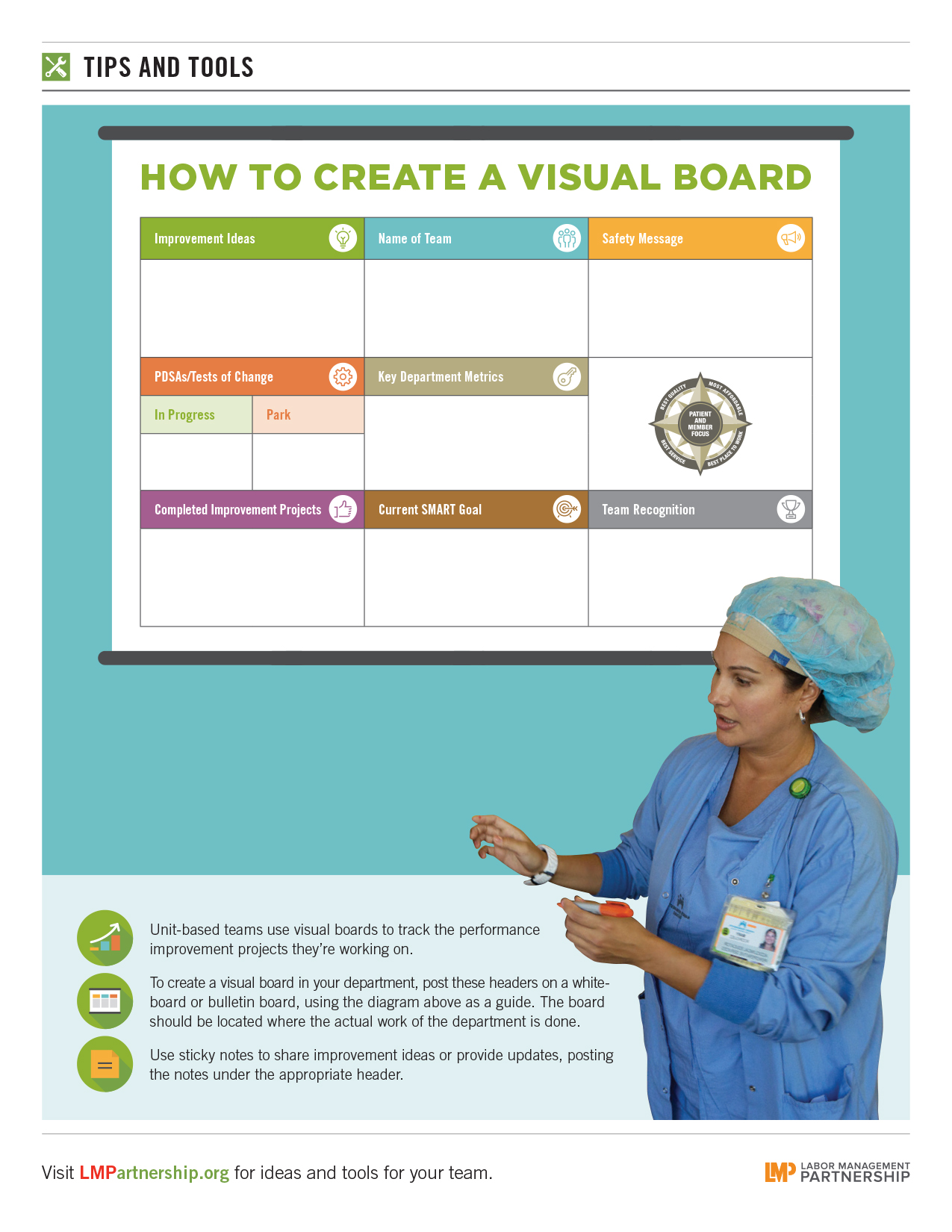Meet Your National Agreement: Champions for Health and Safety
Deck: By helping create a better workplace, new advocates also help improve patient care
Rotonya Parker decided her journey to a healthier lifestyle could use some traveling companions.
She was already eating better and being more active when she learned that her unit-based team needed a Health and Safety Champion.
“I thought I should volunteer because doing it as a team would be an extra incentive,” says Parker, an external referral coordinator in Atlanta and a member of UFCW Local 1996. Since stepping up, she’s shared healthy recipes with her team and is planning a contest to see who walks the most.
Her activities help her UBT fulfill part of the 2015 National Agreement: The latest Path to Performance requires that Level 1 UBTs identify a Health and Safety Champion, who will help build the “culture of health and safety” required of Level 5 teams.
UBTs began identifying champions last fall. In January, they all received “Walk & Roll” buttons to help encourage their colleagues. They got going with an emphasis on walking and moving. In February, the theme was speaking up at work about safety concerns. Each month has a new focus.
With 32 years at Kaiser Permanente in Los Angeles under his belt, Darren “Tree” Wallace, a lead attendant in environmental services (EVS), offered to be his UBT’s champion. EVS departments frequently have a higher rate of workplace injuries, Wallace notes, so safety is key. Members of his UBT share daily tips about everything from how to avoid needle sticks to the proper way to push and pull.
“You don’t want to be old, retired and injured,” says Wallace, a member of SEIU-UHW. “You have to make sure your body is safe at work and at home.”
Take a break to thrive
For Johnyia King Turner, RN, a UFCW Local 400 member in the Mid-Atlantic States, volunteering to help her UBT as a champion was an obvious choice. Turner, who recently began working in Gastroenterology at Largo Medical Center in Maryland, frequently held two-minute thrive breaks when she worked at Capitol Hill Medical Center in Washington, D.C.
“We did squats, wall push-ups or ran in place,” Turner says. As lead nurse, she also presented safety messages in UBT meetings and paused during the workday to have quick safety conversations.
She says the messages were well received: “If you are not healthy and you are not safe, it decreases productivity and we can’t assist the members.”
She’s excited to have a formal title to go with her passion. “I have my Walk & Roll button, and I encourage everyone to walk the stairs,” she says—and adds, laughing, “Now that I’m official, I can really go run my mouth and tell people what they need.”

